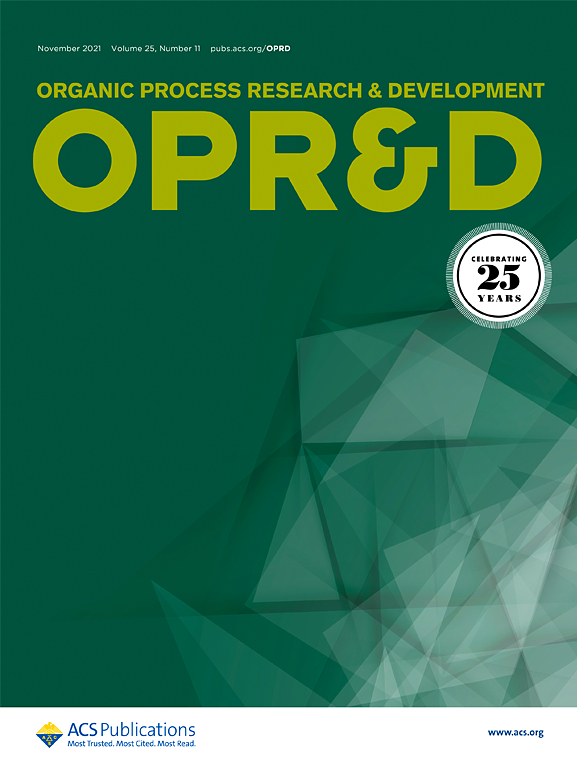胺基亚硝化-氧化环化法制备呋喃唑羧酸酯
IF 3.1
3区 化学
Q2 CHEMISTRY, APPLIED
引用次数: 0
摘要
我们报道了从相应的胺制备呋喃唑(1,2,5-恶二唑)羧酸酯的缩合亚硝化-氧化环化序列。该方法主要适用于制备芳环取代呋喃赞羧酸酯。初步的工艺安全性筛选表明,与常见的二肟脱水法制备呋喃脲相比,本方法具有优势。本文章由计算机程序翻译,如有差异,请以英文原文为准。

Preparation of Furazan Carboxylates from Enamines by a Nitrosation–Oxidative Cyclization Sequence
We report a telescoped nitrosation–oxidative cyclization sequence for preparing furazan (1,2,5-oxadiazole) carboxylic esters from the corresponding enamines. This method is mainly suitable for preparing furazan carboxylates substituted with aromatic rings. Preliminary process safety screening shows that our method offers advantages compared to the common dioxime dehydration method for preparing furazans.
求助全文
通过发布文献求助,成功后即可免费获取论文全文。
去求助
来源期刊
CiteScore
6.90
自引率
14.70%
发文量
251
审稿时长
2 months
期刊介绍:
The journal Organic Process Research & Development serves as a communication tool between industrial chemists and chemists working in universities and research institutes. As such, it reports original work from the broad field of industrial process chemistry but also presents academic results that are relevant, or potentially relevant, to industrial applications. Process chemistry is the science that enables the safe, environmentally benign and ultimately economical manufacturing of organic compounds that are required in larger amounts to help address the needs of society. Consequently, the Journal encompasses every aspect of organic chemistry, including all aspects of catalysis, synthetic methodology development and synthetic strategy exploration, but also includes aspects from analytical and solid-state chemistry and chemical engineering, such as work-up tools,process safety, or flow-chemistry. The goal of development and optimization of chemical reactions and processes is their transfer to a larger scale; original work describing such studies and the actual implementation on scale is highly relevant to the journal. However, studies on new developments from either industry, research institutes or academia that have not yet been demonstrated on scale, but where an industrial utility can be expected and where the study has addressed important prerequisites for a scale-up and has given confidence into the reliability and practicality of the chemistry, also serve the mission of OPR&D as a communication tool between the different contributors to the field.

 求助内容:
求助内容: 应助结果提醒方式:
应助结果提醒方式:


